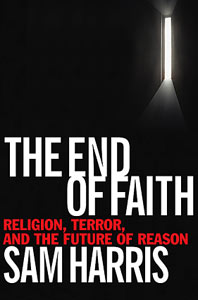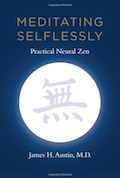Think about how you feel right now, and describe it to me.
That’s metadata. How you actually feel is data.
Your consciousness (CPU or main thread) is constantly switching between data and metadata, automatically. It doesn’t want you to experience the data stream for too long; it is constantly looking for meaning in the data stream and switching over to processing that.
Now give full priority to your data stream, and every time a metadata connection comes in (on a bus from a unit which wants a thought to be examined, that is, processed by your CPU), send a 503 (“Service Unavailable”) response and close it. Gently focus all your resources on data, attempting to increase the data connection’s bandwidth and ignoring all metadata requests, or the thoughts which arise about the data, about the metadata, and so on.
Even the act of sending the 503 should be done in the background; this will eventually become a background thread.
Results: You start slowly (over days, weeks, months, years) becoming more aware of all of the data that is coming in, and gaining more conscious control over the decision module which switches between consciousnesses (perception, thought, another thought, and so on). You notice that many thoughts which most urgently want to be processed (have their priority flag set highest) are related to the so-called ego: they touch on the question “How can I (myself, my place in the world, my family, things in accordance with my values, et cetera) profit from this?” “This” being the object or subject of the thought.
You’ll notice that the thought has two parts, one of which is an idea, another one is an entity which has some relationship to the idea. There are “first-person ideas”, where the relationship is between “I”-like things and other things, and “second-person ideas”, where the relationship is between two other things. For second-person ideas, there’s still an implied first-person relationship of which the ego is highly aware. E.g., when talking about other people, there is a strongly perceived personal benefit to the having had (and then having communicated) the thought. The ego’s determination is often felt; it feels good to talk about others; individuals (and the sexes) have different tunings as to how good it feels to have second-person thoughts. (A feeling is like a persistent thought which sets up parameters in the mental environment.) As for third-person thoughts, because the ego and even the mind at large is not immediately concerned with them, they’re kept out of waking consciousness or given few mental resources. To the extent that third-person thoughts can eventually contribute first-person value, they are allowed; I think that emotional state and mental “weather” (whether the brain has more alpha-wave, theta-wave, etc. frequencies of neural oscillations) affects how quickly the ego shuts down what it deems individual third-person thoughts and the generation of such thoughts.
Another thing you’ll observe: when you want something to happen in your head, your thoughts start making it happen, no matter how abstract the language used to talk about it. This language of “background threads” seems a little silly because your brain is not digital and doesn’t work that way, so how do you “move a thought to a background thread”? But the concept is still useful because language does seem to have an effect via the concrete symbols the brain uses for abstract understanding. Maybe you vaguely or ever-so-subtly change something when you try, without knowing what it is, and the result feels completely unrewarding; this is the ego’s short-term thinking evaluating the sustained effort that would be required for long-term mental reconstruction and not believing it as possible or coming up with a positive evaluation as to that course of action. The ever-practical ego says “don’t bother with this” and “give up, you have better things to do.” It’s also tricky. It will actively try and trick you into giving up, making you forget, and so on.
How do you resolve whether your ego is trying to play a trick (by generating mental, emotional or physically-felt discomfort with the continuation of an activity, which leads to explanatory thoughts validating the emotional state), or whether the activity is worth sticking to? This is a lifelong process, an “argument” or interplay between two or more parts of the brain. The “larger” mind takes a longer time to evaluate and usually knows what’s right, but it has a far quieter voice than the insistent ego, which is concerned with the very short-term; it also seems that no thoughts escape the notice of the ego, which can be thought of, in computer terminology, as a module which adds at least two things: (1) an importance flag, and (2) a “surety of importance” flag.
The above is a simplified explanation of what seems true to me, but what can be grasped and expressed with language is always a simplification.
[ And… ego (in the more noble sense of the word, that by which we’re guided towards “productive” activities and behaviors) is involved here, in this writing, as everywhere. Existing within we social creatures, the default ego deems that thoughts expressible in language, and the retention of “word-ified” thoughts, be given vastly higher priority than thoughts which are visual, emotional, or deal with senses and capabilities which we cannot describe and therefore communicate to others. These thoughts do happen in the sea of all thoughts, but they are let go of quickly. If the ego is a fisherman then such thoughts are thrown back. And so, our faculties for having (catching) them decreases as we modify our nets to avoid them; further, we pollute the ocean with chemicals harmful to these thoughts, yet do not care about this, because we don’t catch (retain, eat) them anyway. This all exists within the process of maturation. ]
My thinking at this point is that consciousness is a changing configuration of attention on the output of various “modules” in the brain. It has wirings (buses) into all modules.
Ego is such a module, which can be trained as the others can. Meditation is a space in which to train these underpinnings of the mind, but it is definitely not easy, in the same way that learning to play the piano (with one’s feet, perhaps), is not easy. But it is more rewarding.
 On
On 